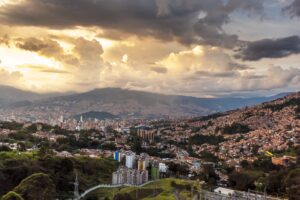Since 2020, the global energy landscape has undergone profound disorder, triggered by a cascade of disruptive events. First, the COVID-19 pandemic exposed vulnerabilities in supply chains and energy demand. Then, in 2022 escalating geopolitical tensions—most notably Russia’s invasion of Ukraine—reshaped global alliances and trade routes.
Simultaneously, a growing commercial rivalry between major powers and widespread disruptions across critical value chains have intensified the urgency for energy security and independence. These events have redefined the global energy transition, forcing governments and industries to rethink their strategies in pursuit of economic resilience, sustainability, and social welfare. And like tightrope walkers navigating a shifting wire, they must now balance these priorities with the urgent demands of climate action, all while contending with an increasingly complex geopolitical landscape.
I dare to say, that the year 2020 marked officially the end of the 20th century inertia and marked the official entrance to the 21st century. An undeniable global transformation in which lies a new frontier: the race for rare metals and minerals that fuel the technologies of a low-carbon promised land.
These critical resources—long familiar to mineralogists but newly indispensable to policymakers and technologists—are now the lifeblood of clean energy systems, electric mobility, and digital infrastructure. In today’s rapidly shifting landscape, they have become the new currency of geopolitical influence and industrial innovation, quietly powering the ambitions of nations and the evolution of global markets.
Rare metals—the spark of the green revolution—have quietly become indispensable to modern information and communication technologies. Their unique semiconducting properties regulate the flow of electricity in digital devices, making them foundational to everything from smartphones and satellites to renewable energy systems and electric vehicles. As the world races toward a low-carbon future, these elements became strategic assets shaping the next chapter of global innovation.
Critical and Rare are not the same
Commonly, the distinction between critical minerals and rare minerals is blurred (I still make that rookie mistake sometimes). The term critical minerals refers to elements that are considered essential for economic development and national security, especially those with vulnerable or concentrated supply chains, including lithium, cobalt, nickel, and copper—materials vital to clean energy technologies, electric vehicles, and digital infrastructure.
The rare metals are defined by their geological scarcity, complex extraction, or specialized properties, such as Tantalum (used in aerospace compounds, medical implant, among others) and Palladium (used in Catalytic converters, fuel cells, electronics, hydrogen purification). Though these elements are not geologically scarce, they are notoriously difficult and costly to extract and refine due to their dispersed concentrations and complex processing requirements.
While many rare metals are considered critical, the two terms aren’t interchangeable. The confusion often arises because some rare earths are also considered critical minerals—those essential to economic and national security with vulnerable supply chains—but not all critical minerals are rare earths. As technological diversification accelerates, the palette of metals societies relies on has expanded dramatically.


